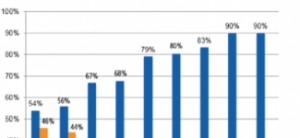How to Optimize Your Staffing Firm's MSP/VMS Programs
Many staffing firms hesitate to become suppliers to MSP/VMS programs due to challenges with communication, feedback, and cost pressures. However, with the right strategy, staffing firms can successfully navigate MSP/VMS partnerships while maximizing profitability and efficiency.
Below are the three key challenges staffing firms face and how to overcome them.

1. Ineffective Management & Process Barriers
When account managers are unable to develop direct relationships with corporate hiring managers, staffing firms often experience:
🚨 Wasted recruiting cycles due to poor job order clarity
🚨 Increased cost of doing business from inefficiencies
🚨 Poorly written job descriptions that make sourcing difficult
🚨 Misalignment between hiring managers and suppliers
How to Solve This Issue:
✅ Streamline the recruiting process by implementing standardized workflows
✅ Leverage data-driven recruitment strategies to improve speed-to-market
✅ Adopt Applicant Tracking Systems (ATS) that integrate with MSP/VMS programs
✅ Align with technology-driven recruitment best practices to reduce manual processes
2. Lack of Feedback & Communication Roadblocks
One of the biggest complaints staffing firms have about MSP/VMS programs is the “black hole effect”—where candidate feedback is either delayed or nonexistent. This lack of communication:
🚨 Demotivates recruiters who don’t receive updates
🚨 Reduces candidate engagement due to unclear hiring timelines
🚨 Creates inefficiencies in managing candidate pipelines
How to Improve Feedback Loops in MSP/VMS Programs:
✅ Use data-driven insights to track candidate submittal-to-hire ratios
✅ Develop internal KPIs that measure MSP/VMS success
✅ Ensure recruiters focus on job orders that provide clear feedback
✅ Collaborate with MSP partners to refine communication protocols
📢 “The key to success in MSP/VMS programs is having a streamlined, transparent feedback system that supports both staffing suppliers and hiring managers.”
3. Cost Pressures & Reducing the Human Factor
Many MSP/VMS solutions prioritize cost-cutting, treating human capital as a procurement function rather than a strategic hiring initiative. This results in:
🚨 Decreased candidate quality due to budget constraints
🚨 Over-reliance on automation at the expense of recruiter expertise
🚨 Hiring managers creating workarounds (such as SOW contracts) to avoid restrictions
How to Balance Cost Efficiency with Talent Quality:
✅ Position your staffing firm as a strategic partner—not just a supplier
✅ Implement value-based pricing models instead of cost-cutting strategies
✅ Use AI-powered recruitment tools to increase efficiency without sacrificing quality
✅ Advocate for better program management that prioritizes both compliance and candidate quality
Final Thoughts
To succeed in MSP/VMS programs, staffing firms must optimize their recruiting strategy, leverage technology, and create efficient workflows. By addressing management inefficiencies, communication gaps, and cost challenges, staffing firms can turn MSP/VMS partnerships into profitable opportunities.
📢 “Focusing on these components will make all the difference in how your staffing firm delivers!”
Schedule a Free Consultation
Want to optimize your staffing firm’s MSP/VMS strategy?
📅 Schedule a consultation today
